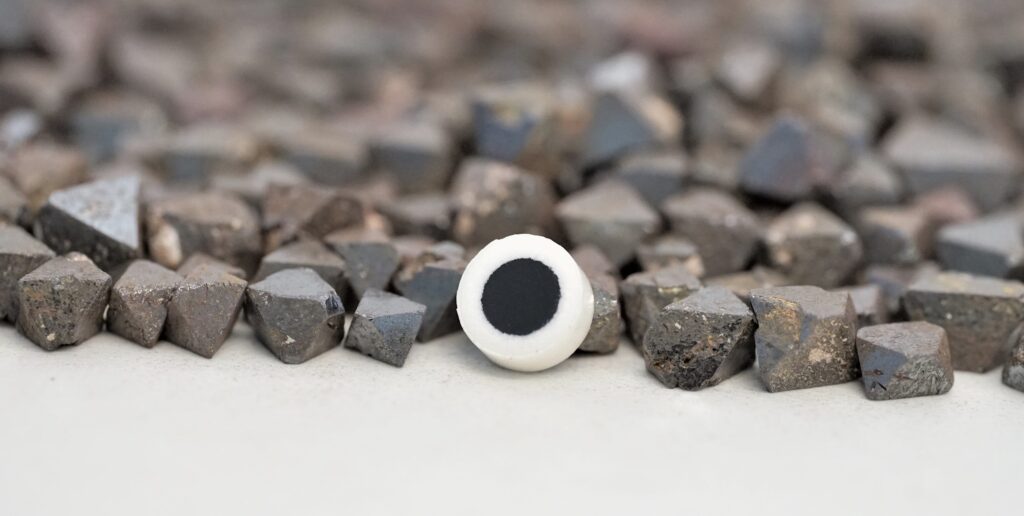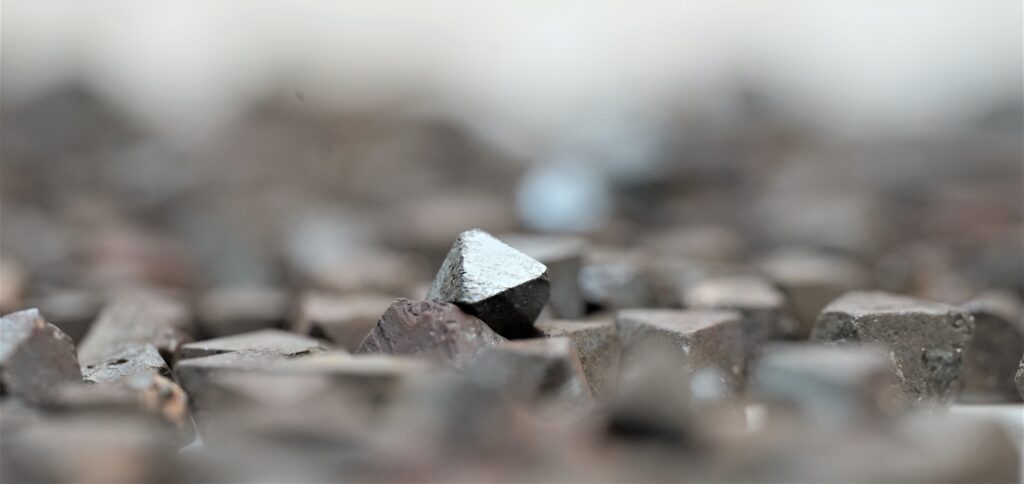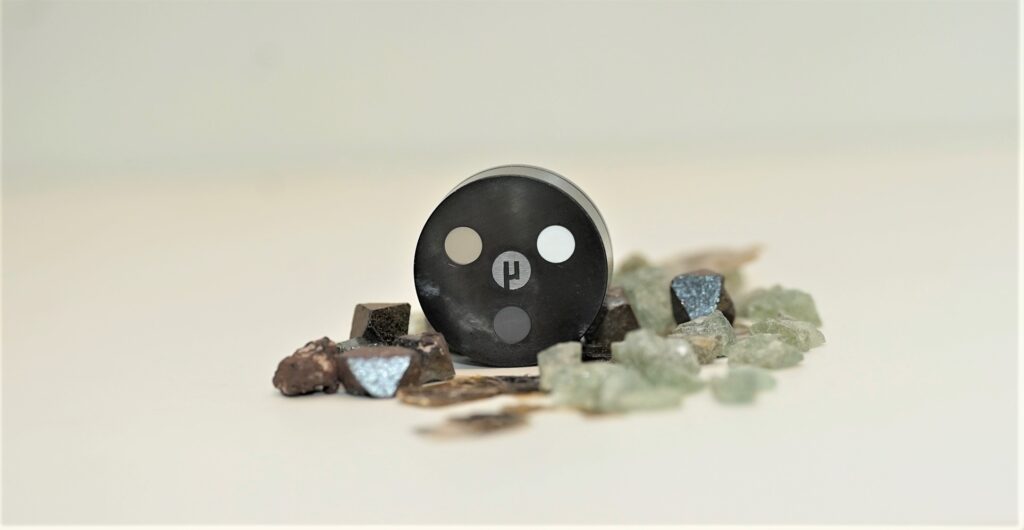Magnetite Australia Kennedy Ridge-Nano-Pellet (MAKR-NP) is our first certified Nano-Pellet from iron ore, which myStandards produced following the provisions of ISO 17034. Here you will learn about magnetite and why we chose it to be one of our certified reference materials.

What is magnetite and why is it interesting as a certified reference material?
Magnetite is a mineral and one of the main iron ores with the chemical formula Fe3O4 (Fe2+Fe3+2O4). It is a ferrimagnetic mineral, meaning it is attracted to a magnet and can also be magnetized to become a permanent magnet itself. Of all naturally occurring minerals on earth, it is the most magnetic. It was through this mineral that people first discovered the property of magnetism. Magnetite is black to brownish black with a metallic sheen and has a Mohs hardness of 5-6.
Furthermore, magnetite is a strong petrogenetic indicator due to its variable geochemistry. By determining the trace elements such as Ti, Al, Mg, Mn, V, Cr, Co and Zn, conclusions can be drawn about the circumstances under which the magnetite was formed. Thus, trace element analysis can be used to infer the skarn stages and compositions of the wall rock. The trace element chemistry of magnetite can provide a potentially informative fingerprint for the origin of the sediments and the regional mineralisation.
Laser Ablation Inductively Coupled Plasma Mass Spectrometry (LA-ICP-MS) is suitable, for example, for analysing the chemical composition of magnetite. In order for such analyses to give accurate results and thus the correct conclusions, the analystical instruments must be calibrated with a material that is as similar as possible and has a known chemical composition. Our MAKR-NP is perfectly suited for this purpose. It consists of pure magnetite, without binding agents, is matrix matched and well characterised.

The path from magnetite crystals to Nano-Powder to Nano-Pellet
After having chosen the material for our next certified Nano-Pellet, a production plan was drawn up in accordance with the provisions of ISO 17034.The first step was to remove dirt and dust using distilled water. Thereafter, the crystals were rinsed using deionised water (18.2 MΩ resistivity) and dried in a laminar flow hood. 500 g of the clean crystals were crushed manually in an agate pestle and mortar to a particle-size < 2 mm. The particles were then processed by our team by means of wet-milling, freeze-drying and homogenisation in our production laboratory. Thereafter, the material’s identity was confirmed by X-ray diffraction. Subsequently, the powder was divided using a rotary sample splitter yielding a total of 39 batches contained in glass vials. For storage the vials are vacuum-sealed with silica-gel and stored in an automated desiccator. Batch numbered MAKR-NP-2021-09-B01 was completely pressed into 63 Nano-Pellets, 7 of which were checked for homogeneity and stability using LA-ICP-MS. The chemical analyses were performed in two ISO 17025 accredited laboratories.
After systematic sample evaluation the data were condensed into the certificate of analysis. The certificate contains the certified values including their combined and expanded uncertainties resulting from characterisation as well as homogeneity and stability testing. All these steps were performed meticulously following ISO 17034 and, according to this standard, are mandatory when calling a material or rather its attributed values certified. You can find an example of our data evaluation and the certification report with further information on the MAKR-NP product page.
By the way, we are always interested in Feedback: In case you would like to see additional elements, isotopic ratios or further information which are not in the certificate or certification report feel free to contact us! It is possible to press Nano-Pellets out of the remaining powders for other methods, e.g., LIBS or micro-XRF. These Nano-Pellets, because they lack a homogeneity- and stability test, will not be designated as certified, but are very well characterised for their chemical composition.
Mineral Sets – The first of many
With the launch of our first certified microanalytical reference material from iron ore, we would also like to introduce our first Mineral Set. The Mineral Set includes 3 mineral Nano-Pellets with a diameter of 10 mm packed in a one inch round aluminium mount. The mount is CNC machined from aircraft grade aluminium and coated with Diamond Like Carbon (DLC). It is ideal for laser ablation (LA-ICP-MS) and simplifies handling and storage. The set consists of the following three mineral standards: Apatite-NP (Apatite), MAKR-NP (Magnetite) and Mica-Mg-NP (Phlogopite).

MAKR-NP is the second certified reference material from the mineral category and our first iron ore. More certified materials from the mineral category and iron ores will follow in the next few months, as well more Mineral Sets. Stay tuned!
To receive further information about our future projects, feel free to subscribe to our Newsletter here.
Latest news posts:
- How to Build Your Custom Pressed Pellet Set for XRF (32 mm)
- An exciting new project: the development of a Sulphide-Nano-Pellet as a reference material
- 32 mm Pressed Pellets for XRF – an alternative to the Nano-Pellets for XRF!
- New certified reference material from biotite: BTNO-Nano-Pellet
- Muscovite certified reference material: MSNA-Nano-Pellet
